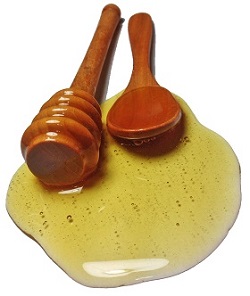
What's the Best Honey?
Purity assumed, "the best honey" is best discussed in terms of personal preference for floral varieties and tastes. Like enjoying and appreciating wine, everyone has their unique take when it comes to tasting this golden liquid. Some prefer it strong and robust while others, blend and mild. Different countries yield their own delicious floral varieties of honey in various sets of farming conditions - environment, weather, soil, and honeybee species. There are thousands of different floral plant genera with thousands of distinct species and hybrids. Each country seems to be claiming that they produce the best honey, the finest, and most exquisite honey in the world. Whatever the flavour, and whatever the aroma, so long as the honey produced is 100% pure, unadulterated, untainted by any chemicals or pesticides, it is as good as gold.While all honey floral varietals are good, not all are equal in terms of medicinal value. The most recognised medicinal honey containing the most antibacterial properties is New Zealand's well-acclaimed medihoney or Manuka Honey, among which is the most coveted hospital grade UMF 20+ for treating infected and gangrenous wounds. There are other floral honey varietals from different countries that are potent in its anti-viral capabilities but not as universally known (e.g Tualang Honey from Malaysia). Some honey varieties also have their own unique factor, e.g Buckwheat honey is high in iron content, Eucalyptus honey has good calming effects, etc. Also, in terms of color, as a general rule of thumb, the darker the honey, the richer the mineral content and antioxidant properties. Thus dark honeys such as Buckwheat, Goldenrod and Bamboo are preferred by some even though their tastes may not be the most pleasant of all honeys. More details in: Dark Honey Boasts High Antioxidants.

Honey also comes in different forms - raw, pasteurised, liquid, creamed, etc. Raw honey which is unprocessed, unheated, is highly valued for its live enzymes which are significantly destroyed in preparing commercial, pasteurised honey. However, raw honey is mostly directly purchased from the beekeepers and local honey farms, which do not exist in accessible places for some people. While cream honey is mess-free and favoured by those who enjoy using honey as a spread for toast, liquid honey is an all-time favourite for drizzling over pastries, pancakes, biscuits, and fresh greens. Hence, what is considered as "best" is also dependent on how one prefers to apply or eat honey.
And finally, there's the relatively scarce and more expensive organic honey for those who believe in eating only the purest form of this natural sweetener - 100% free of pesticides or environmental pollutants, whereby the nectar and pollen sources consist essentially of organic crops as the origin of bees and locations of apiaries are regulated by a strict set of guidelines.
Related Pages
1. Discover how much you know about honey with this quick quiz. Your quiz results might well surprise you! All in: Do you really know me, honey?
2. Raw honey, local honey, pure honey, or organic honey... which do you think is the best, how do you pick? More in: Which Honey to Buy?
3. Are you eating real honey? How helpful are the labels and claims on honey bottles? Eating Real Honey?
4. Any thoughts from this comics strip? Buy Real Honey
5. Clarify common misconceptions of creamed honey, crystallized honey, dark honey, runny water, etc. All in: Frequently Asked Information About Honey:
End of "What's the Best Honey?" Back to "What's Considered Good Quality Honey".